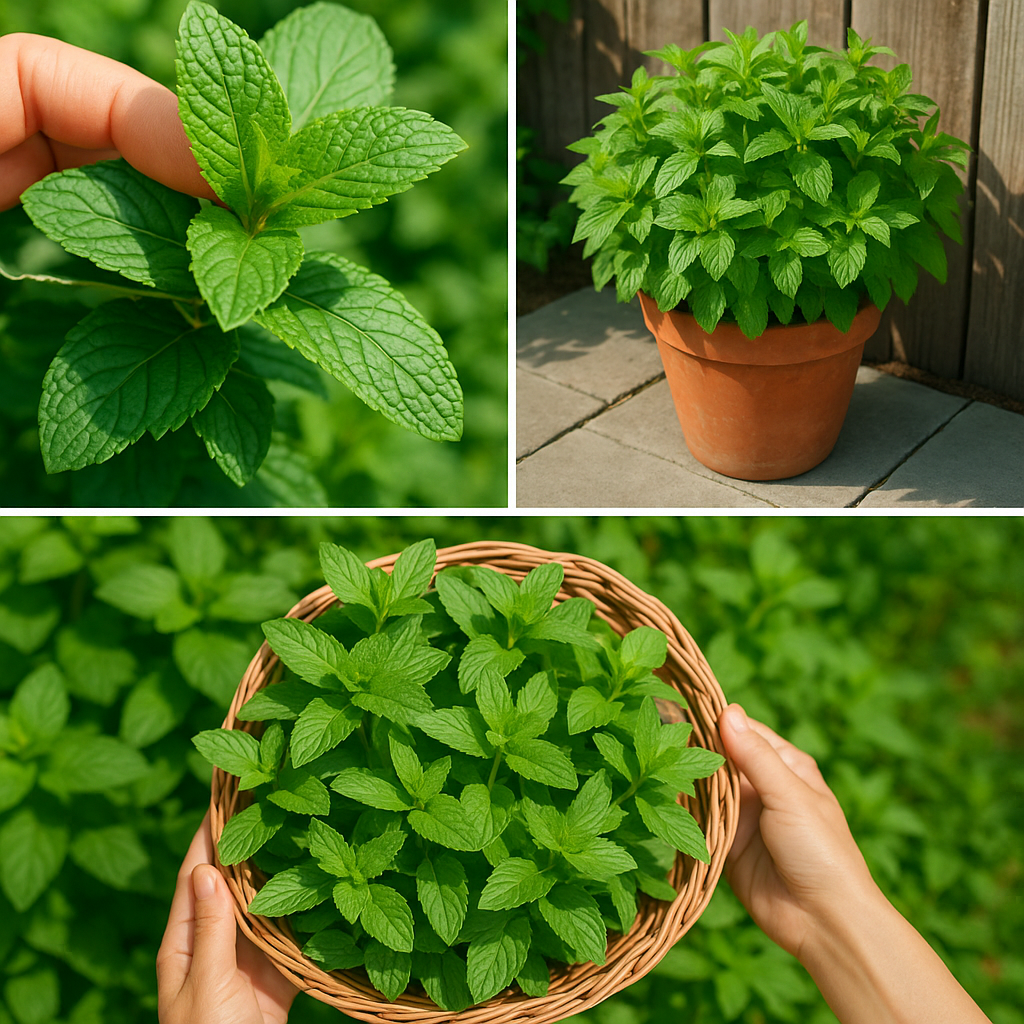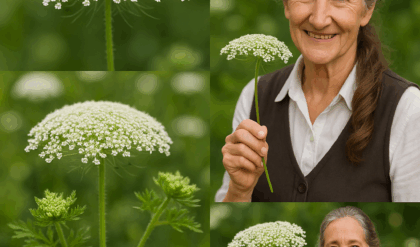🌿 Imagine stepping into your garden to pluck fresh mint leaves for a mojito, tea, or salad, filling the air with their invigorating aroma. Mint (*Mentha* species) is a versatile, easy-to-grow herb that brings vibrant flavor and fragrance to any home, whether you have a sprawling backyard or a tiny balcony. With its rapid growth and low-maintenance needs, mint is perfect for beginners and seasoned gardeners alike. Ready to cultivate your own endless supply of this culinary gem? This ultimate guide covers everything you need to grow mint at home, from choosing varieties to harvesting, ensuring a thriving, flavorful harvest year-round.

Why Grow Mint at Home?
Mint is a gardener’s dream: it’s hardy, adaptable, and thrives in various conditions. Its aromatic leaves elevate dishes, teas, and cocktails, while its essential oils offer natural pest-repelling and therapeutic benefits. Growing mint at home saves money compared to store-bought herbs, reduces waste, and ensures pesticide-free freshness. Plus, mint’s lush green foliage adds beauty to gardens, pots, or windowsills, making it a functional and decorative addition to any space.
Step-by-Step Guide to Growing Mint
Follow these steps to cultivate a thriving mint plant, tailored for success in containers or garden beds, indoors or out.
🌱 Step 1: Choose the Right Mint Variety
Mint comes in dozens of varieties, each with unique flavors. Popular choices include: – *Spearmint* (*Mentha spicata*): Sweet, mild, ideal for teas and cooking. – *Peppermint* (*Mentha × piperita*): Strong, minty, perfect for desserts and mojitos. – *Apple Mint* (*Mentha suaveolens*): Fruity undertones, great for salads. – *Chocolate Mint* (*Mentha × piperita* ‘Chocolate’): Subtle cocoa notes, excellent for beverages. Select a variety based on your culinary needs, or mix multiple for diversity. Purchase starter plants or seeds from reputable suppliers like Johnny’s Selected Seeds or Baker Creek Heirloom Seeds.
🪴 Step 2: Select a Container or Planting Site
Mint’s aggressive roots can overtake gardens, so containers are ideal for control. Choose a pot 12–18 inches wide and 8–12 inches deep with drainage holes. Terracotta or plastic pots work well; ensure a saucer catches excess water. For garden beds, plant in a buried pot or use a root barrier (e.g., a 12-inch-deep plastic liner) to contain spread. Mint thrives in USDA Zones 3–11 but can be grown indoors year-round in colder climates.
🌍 Step 3: Prepare the Soil
Mint prefers rich, well-draining soil with a pH of 6.0–7.0. Mix potting soil with compost or aged manure in a 2:1 ratio, adding perlite or sand for drainage. For garden beds, loosen soil to 12 inches deep and amend with organic matter. Test soil pH with a kit and adjust with lime if too acidic or sulfur if too alkaline. Avoid heavy clay soils that retain water, as mint dislikes soggy roots.
🌿 Step 4: Planting Mint
Plant in spring after the last frost (check your region’s frost dates) or early fall for established roots before winter. For starters, dig a hole twice the root ball’s width, place the plant at the same depth as its nursery pot, and backfill with soil. Space plants 12–18 inches apart in beds or 1–2 per pot. For seeds, sow ¼ inch deep, 6 inches apart, and thin to the strongest seedlings. Water thoroughly after planting to settle the soil.
☀️ Step 5: Provide Optimal Growing Conditions
Mint thrives in partial shade to full sun, needing 4–6 hours of sunlight daily (DLI of 12–20 mol/m²/day). In hot climates (above 85°F), provide afternoon shade to prevent leaf scorch. Indoors, place near a south-facing window or use a 20–40W full-spectrum grow light (e.g., Feit Electric LED) for 12–14 hours daily. Maintain temperatures of 65–75°F (18–24°C) and moderate humidity (40–60%). Protect outdoor plants from strong winds, which can dry out leaves.
💧 Step 6: Watering and Feeding
Keep soil consistently moist but not waterlogged, watering when the top inch feels dry (every 3–5 days, depending on climate). Reduce watering in winter when growth slows. Use a moisture meter to avoid overwatering, which causes root rot. Feed monthly during spring and summer with a balanced liquid fertilizer (e.g., 10-10-10) diluted to half strength, applied to moist soil. Skip fertilizing in fall and winter to respect mint’s slower growth.
✂️ Step 7: Pruning and Harvesting
Pinch back tips regularly to encourage bushy growth and prevent legginess. Harvest leaves anytime once plants reach 6 inches tall, ideally in the morning when oils are most concentrated. Snip stems just above a leaf pair, taking no more than one-third of the plant at a time. Use fresh, dry for storage (in a dehydrator at 95°F for 24 hours), or freeze in ice cube trays with water. Regular harvesting promotes vigorous growth and delays flowering, which can reduce leaf flavor.
❄️ Step 8: Overwintering and Propagation
In Zones 3–5, bring potted mint indoors before the first frost, placing it in a sunny window or under a grow light. In milder zones, mulch garden plants with 2–4 inches of straw or leaves to protect roots. Cut back to 2 inches above soil in late fall. Propagate by dividing root clumps in spring or taking 4-inch stem cuttings, rooted in water or moist soil. Each division yields a new plant, perfect for expanding your mint patch or sharing.
Tips for Growing Mint Successfully
🐜 Manage Pests
Mint is naturally pest-repellent due to its essential oils, but watch for aphids, spider mites, or whiteflies. Rinse leaves with water or apply neem oil if infestations occur. Avoid overhead watering to prevent fungal issues like powdery mildew.
🌱 Control Spread
Mint’s rhizomes spread rapidly, so use containers or root barriers in gardens. Check pots yearly and trim roots if they escape drainage holes to prevent invasiveness.
🌿 Refresh Soil
Repot every 1–2 years in spring, replacing old soil with a fresh mix to maintain nutrient levels. Divide overcrowded plants during repotting to rejuvenate growth.
🧪 Monitor Soil Moisture
Use a finger test or moisture meter to ensure soil stays moist but not soggy. Overwatering is the top cause of mint failure, especially in poorly draining pots.
Precautions for Safe Growing
🩺 Pet and Child Safety
Mint is non-toxic to humans, cats, and dogs, but excessive ingestion may cause mild stomach upset. Keep plants out of reach if pets chew excessively.
🚫 Avoid Over-Fertilizing
Too much fertilizer causes weak, leggy growth. Stick to monthly feeding in the growing season and dilute to avoid nutrient burn.
🦠 Prevent Disease
Ensure good air circulation and avoid wet foliage to prevent rust or anthracnose. Remove affected leaves immediately and treat with a fungicide if needed.
Why Mint Is a Gardener’s Must-Have
Growing mint at home is a win-win: you get a steady supply of fresh, flavorful leaves while enjoying a low-maintenance, pest-resistant plant. Its rapid growth means you’ll harvest within weeks, and its adaptability suits any space—pots, gardens, or windowsills. Mint’s culinary versatility, from garnishing desserts to infusing teas, elevates home cooking, while its aromatic foliage repels insects and soothes the senses. With minimal effort, you can cultivate a thriving mint plant that yields for years, saving money and enhancing your meals.
Start Your Mint Journey Today
🔥 Ready to fill your home with the fresh, zesty scent of mint? Growing *Mentha* is your ticket to a bountiful herb garden, whether you’re a novice or a pro. With the right pot, a sunny spot, and a touch of care, you’ll be snipping leaves for cocktails, salads, and teas in no time. Plant this spring, harvest all season, and let mint’s vibrant flavor transform your dishes. Grab a starter plant or seeds, and watch your garden burst with life. Here’s to thriving herbs and delicious moments!





